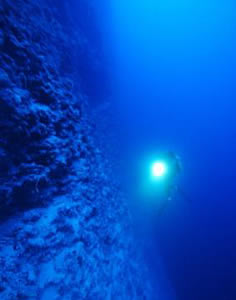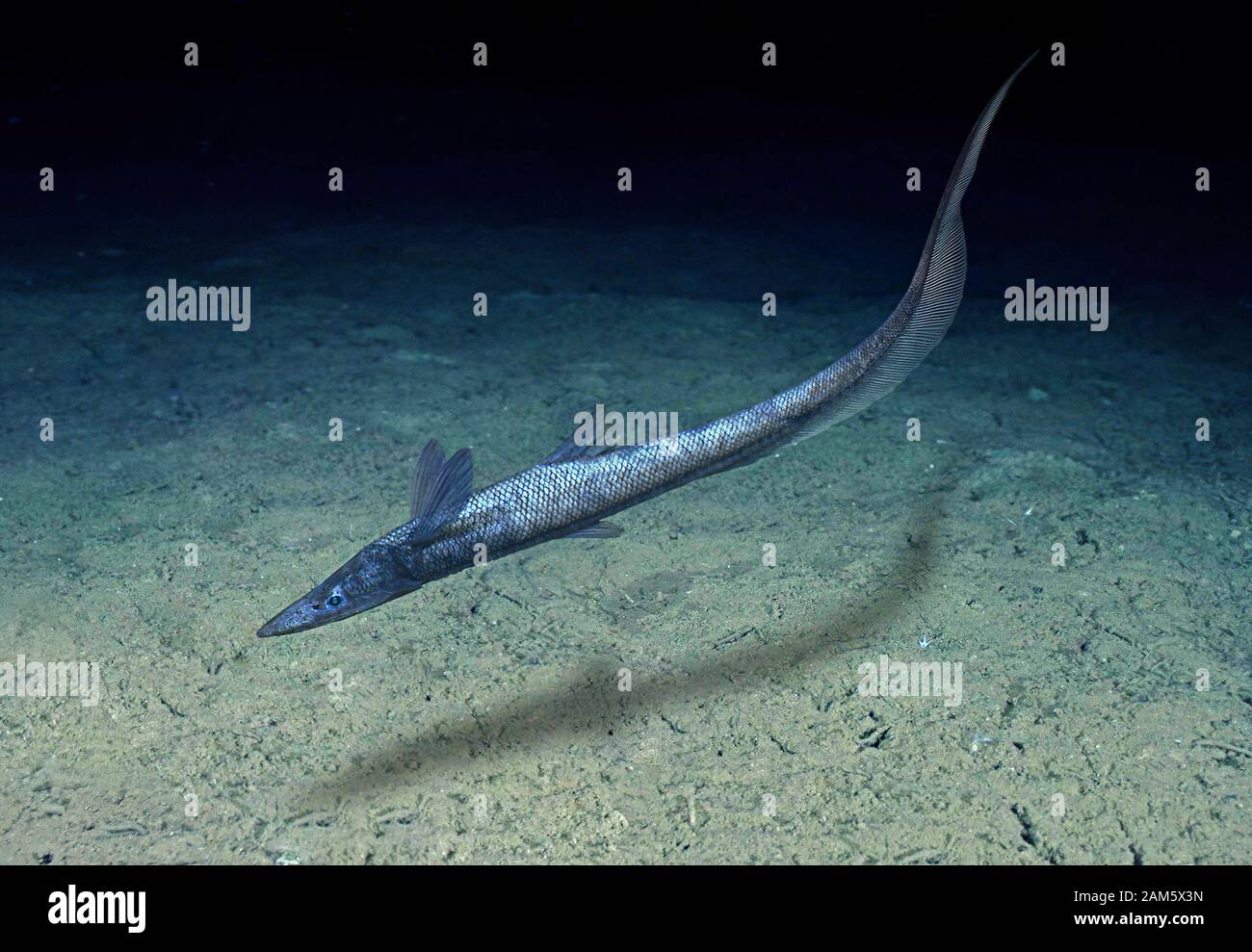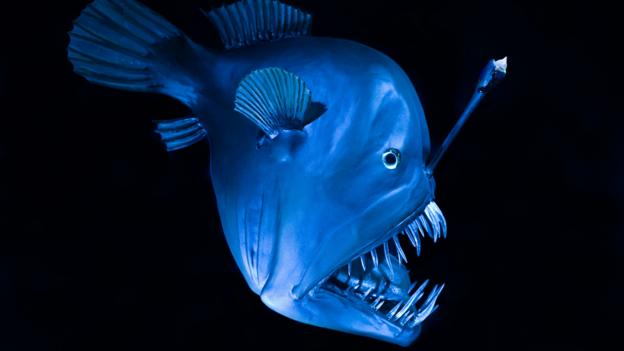

In addition to bioluminescence, many deep sea predatory fish have evolved extremely large jaws, teeth, and eyes for finding and capturing prey while reducing other structures such as skeletons, muscles, and swim bladders to conserve energy and resist the effects of pressure. This is a very useful ability for attracting prey or finding a mate in the dark. Many organisms have evolved bioluminescence, or the ability to create their own light. Animals that live in the deep sea have adapted to these challenging conditions stupendously.

Because no photosynthesis occurs, there are very little nutrients in the water so meals are often few and far between. The water is frigid and pressure is immense in the dark depths. The deep sea is vastly different than shallow waters and riddled with physiological challenges. The majority of biodiversity in the ocean in found in the photic zone where light permeates the water column making photosynthesis possible however, even in the deep sea where little to no light is available, life has found a way. To "assess and explain the diversity, distribution and abundance of life in the oceans" 2, the Census of Marine Life was formed as a global network with researchers in more than 80 nations 2, and the newly published map highlighting discoveries of ocean life in a decade's investigation could be found at 3. These are also likely to be the regions with most marine organisms.

High primary productivity regions clustered in coastal regions where nutrients come from the lands, east side of ocean basins as well as polar regions where upwelling occur, and equatorial regions where surface water diverge and nutrient-rich deep water move upwards 1. Therefore, we can map the global distributions of marine life based on the distribution of chlorophyll and primary productions, see figures below 1: Phytoplanktons are the major primary producers in Ocean, and the rest of marine animals rely on the primary productions for energy sources.


 0 kommentar(er)
0 kommentar(er)
